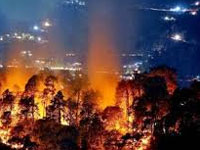The case for action on black carbon
Reducing black carbon emissions will help in avoiding climate tipping points, building resilience and delivering clean air. This policy brief outlines the latest science on black carbon, examples of cost
Reducing black carbon emissions will help in avoiding climate tipping points, building resilience and delivering clean air. This policy brief outlines the latest science on black carbon, examples of cost
<p>In order to understand the regional climate implications of aerosols over Indo Gangetic Plains (IGP), a major Indo-US field experiment, Ganges Valley Aerosol Experiment (GVAX) was conducted during 2011–
A GMACCC report warns that a recent drought in India which has affected over 330 million people – causing displacement and threatening farms –is just the first hint of how climate change could destabilise
Efforts to reduce dangerous air and climate pollutants by Latin American and Caribbean (LAC) countries could reap immediate and long-term benefits for health, food security and the climate according to

NAINITAL: Raging forest fires in Uttarakhand could have a devastating effect on the state's glaciers which are the lifeline of the major rivers flowing through India's northern plains. According to
Parties to the United Nations Framework Convention on Climate Change (UNFCCC) have requested guidance on common greenhouse gas metrics in accounting for Nationally determined contributions (NDCs) to emission
<p>Although black carbon (BC) represents a key short-lived climate forcer, its direct radiative forcing remains highly uncertain. The available results from available studies of absorption enhancement
Using a global coupled biogeochemistry–climate model and a chemistry and transport model reveals that China’s present-day global radiative forcing is about ten per cent of the current global total, made
<p>The coating of black carbon (BC) with inorganic salts and organic compounds can enhance the magnitude of light absorption by BC. To elucidate the enhancement of light absorption of aged BC particles
<p>Emissions from solid fuels used for cooking cause ~4 million premature deaths per year. Advanced solid-fuel cookstoves are a potential solution, but they should be assessed by appropriate performance
The Arctic Monitoring and Assessment Programme (AMAP), one of the six Working Groups of the Arctic Council, has released its assessment report on black carbon and ozone as Arctic climate forcers, which